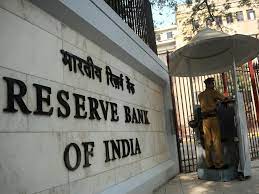
States’ Gross Fiscal Deficit Set to Fall in 2022-23, Says RBI: The Reserve Bank of India (RBI) said that the finances of Indian states are projected to improve in 2022-23 with the consolidated gross fiscal deficit to gross domestic product ratio seen falling to 3.4 percent from 4.1 percent for the previous year. On the back of a broad-based economic recovery and the associated high revenue collections, the fiscal health of the states has improved from a dramatic pandemic-induced deterioration in 2020–21. During the pandemic years, states’ finances were under pressure due to rising expenditures and limited revenue growth.
January 2023 Current Affairs Quiz
The debt of the States is expected to ease from 31.1 percent of GDP in 2020–21 to 29.5 percent in 2022–23, although it is still more than the 20 percent suggested by the Fiscal Responsibility and Budget Management Review Committee in 2018.
A Buffer Fund For Long Term Capital Expenditure:
When revenue collection is good, the central bank urged governments to establish a fund for longer-term expenses. It is worthwhile considering creating a capex buffer fund during good times to smoothen and maintain expenditure quality and flows through the economic cycle, the central bank added. Despite a significant increase in federal government capital expenditures, which has an impact on economic growth, the report found that state capital spending expanded by just 0.9 percent from April to October of the previous year.
States are boosting current expenditures, such as that wages, interest payments, and subsidies, at a faster rate in the current fiscal year than they are spending on longer-term infrastructure projects. Further financing for areas like infrastructure, health, education, and switching to renewable energy sources was also mentioned as having the potential to increase future productivity. It is prudent to think about setting up a capex buffer fund while revenue flows are robust.
The report added that states also need to encourage and facilitate higher inter-state trade and businesses to realise the full benefit of spillover effects of state capex across the country.
It also said that the state’s net market borrowing for 2022–2023 (up to the end of 2022) was Rs 3.02 lakh crore. They are expected to raise Rs 3.41 lakh crore (gross) during January – March 2023.
The actual market borrowings of states over the first nine months of this fiscal year were significantly lower than the indicative calendar. For the remainder of the year, the quantum of issuance by states is likely to be influenced by the size of monthly tax devolution, the release of the pending GST compensation, the disbursement of interest-free capex loans to states and actual capital spending.
To crowd in private investment, state governments may continue to focus on creating a congenial ecosystem for the private sector to thrive.
Fiscal Responsibility and Budget Management (FRBM) Act:
The Fiscal Responsibility and Budget Management (FRBM) Act, 2003 sets a bar for the government to lay a foundation of monetary limitations in the Indian Economy. It contributes to the improvement of the management of public funds and lowers the fiscal deficit rate as well. The FRBM Act also allows for the use of an escape clause in times of disaster or national security. In such cases, the government may deviate from its target annual fiscal deficit.
Key features of the FRBM act:
- The FRBM is responsible for maintaining and placing things in a union budget document in parliament every year which is mandatory.
- Items that the government should maintain along with the budget documents are – Specifications of Medium Term Fiscal Policy Statement, Specifications of Macroeconomic Framework Statement, and Specifications of Fiscal Policy Strategy Statement.
- It was suggested that the statement of medium-term fiscal policy include all four fiscal indices, including revenue deficit as a percentage of GDP, fiscal deficit as a percentage of GDP, tax revenue as a percentage of GDP, and total amount still owing as a percentage of GDP.





